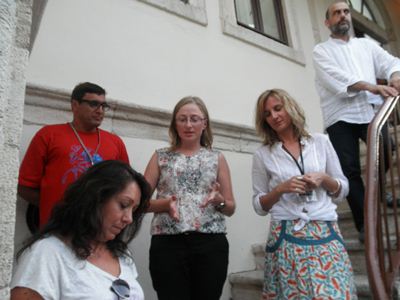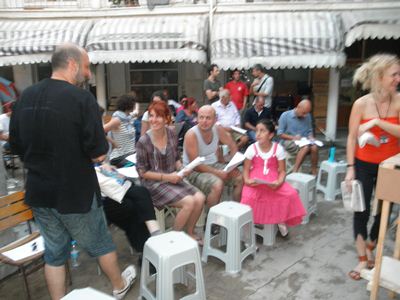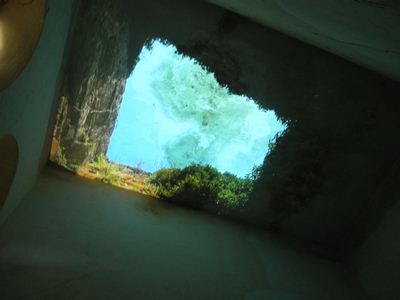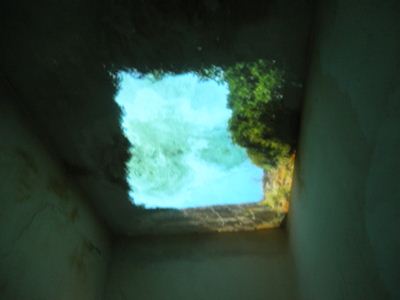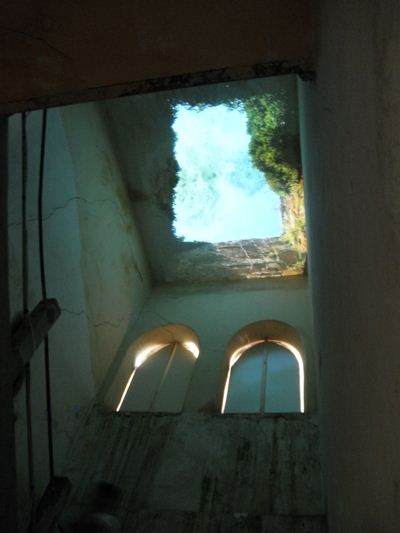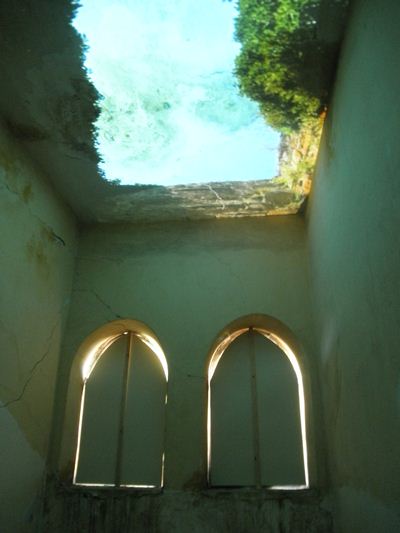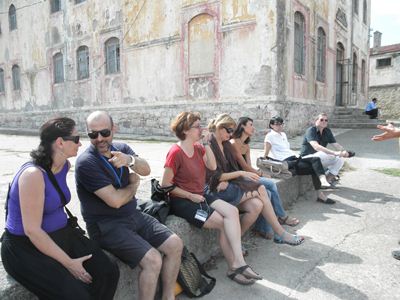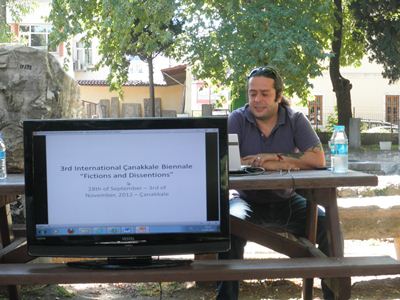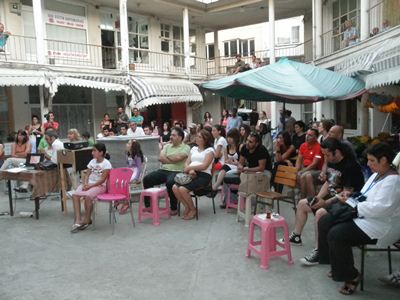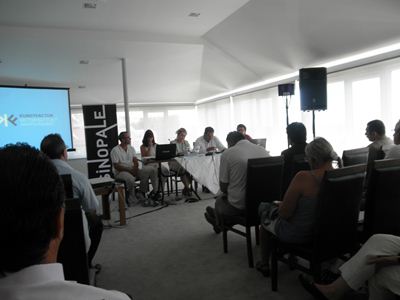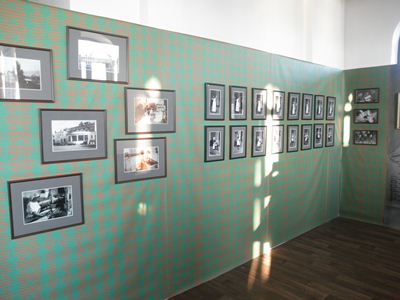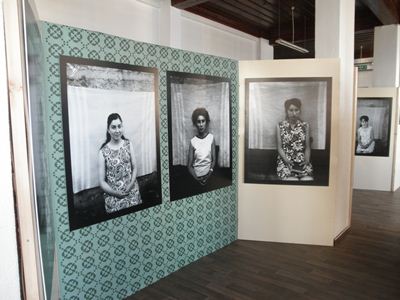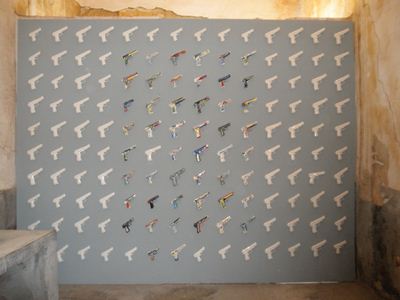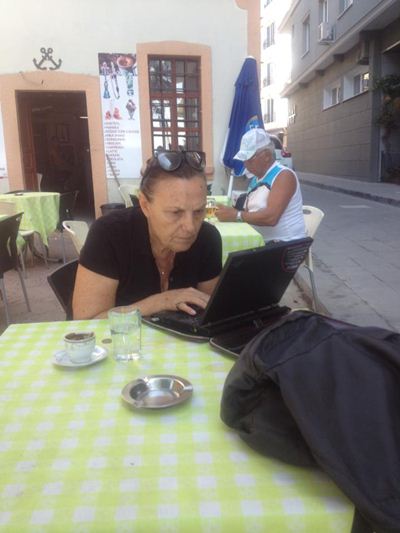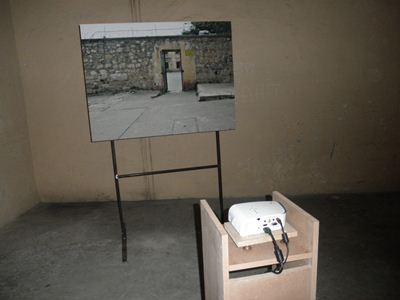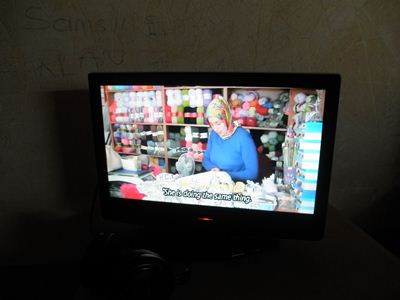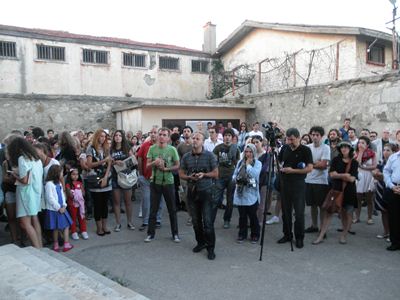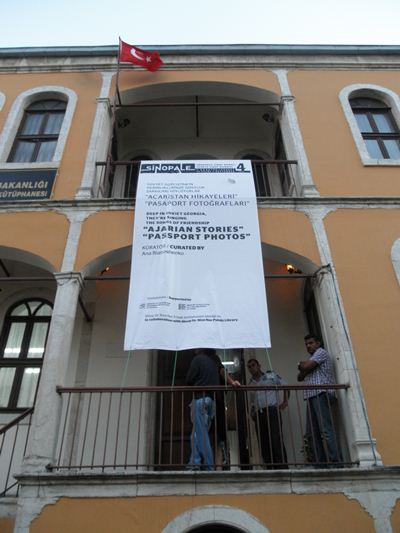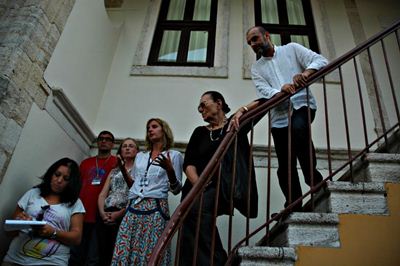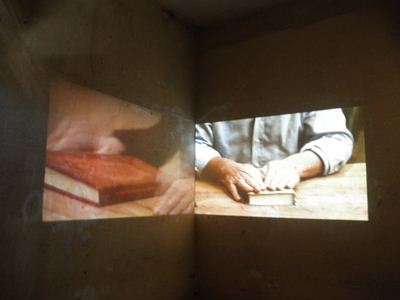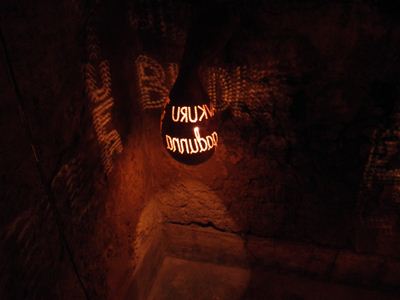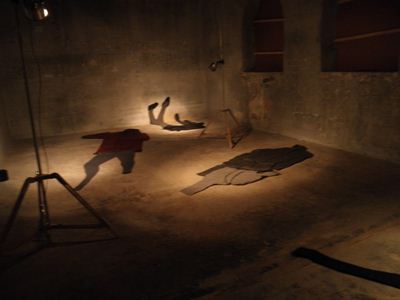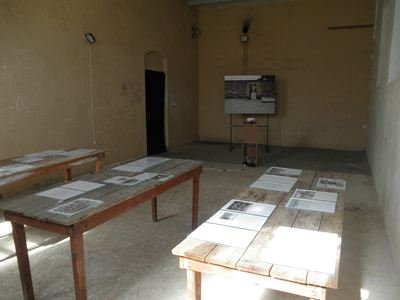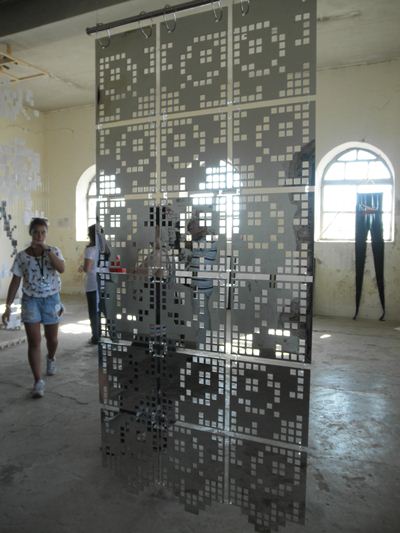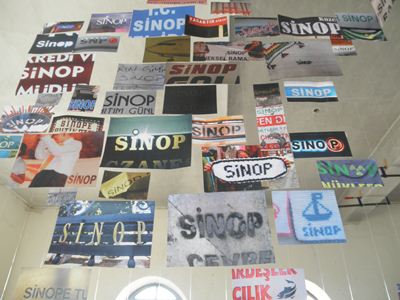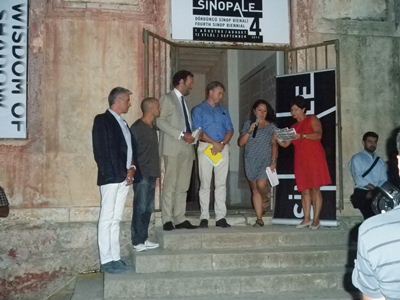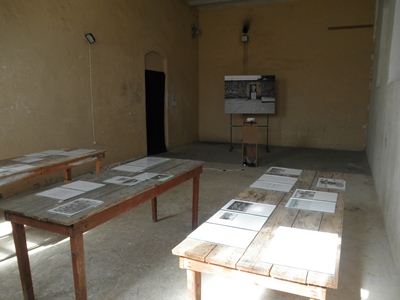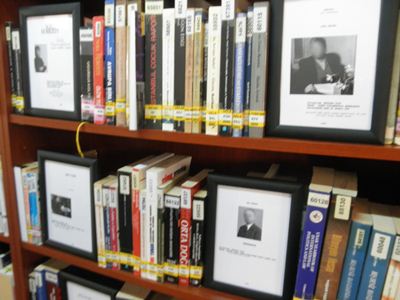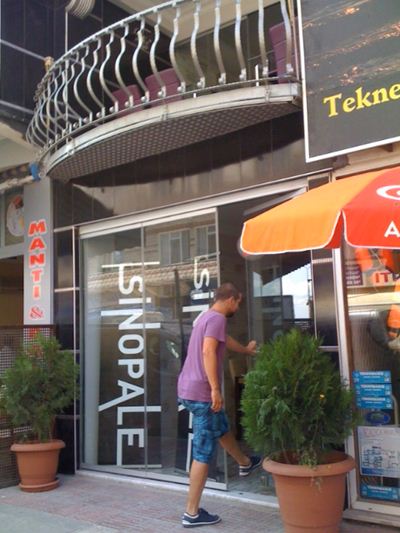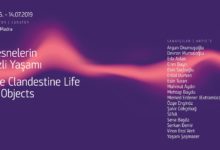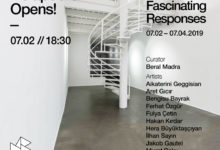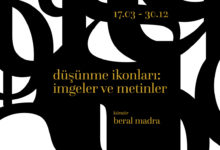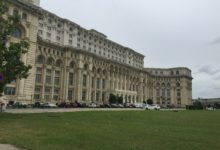Sinopsis2012_1-2_TR
SINOPALE04_GURCISTAN
Sinopale Press Text_TR_Haziran
SINOPALE4 PROGRAM
Sinopsis2012_2-2_TR
Sinopale Press Text_TR_Haziran
BASIN BÜLTENİ
Sinopale 4
“Gölgenin Bilgeliği: Bozulmuş Bilgi Çağında Sanat” Sinopale (Uluslararası Sinop Bienali) dördüncü kez gerçekleştiriliyor.
Bu yıl 1 Ağustos- 12 Eylül tarihleri arasında gerçekleşecek olan “Sinopale 4”, yerel, ulusal ve uluslararası kültürel işbirliğiyle, yerel dönüşümü amaçlayan bir model geliştiren bir sanat etkinliği olarak uluslararası sanat ortamına dördüncü kez kapılarını açıyor. Kendi modelini geliştiren Sinopale, yerel halkın sanat üretimine katıldığı, kültür ve sanat alanında yoğun atölye çalışmalarını da kapsayan bir etkinlik olarak tasarlanmıştır.
Sinopale her yaştan kentlinin kendi yaşam alanlarını gelecek vizyonuna sahip olarak yeniden algılamaları, kent sorunları üzerine düşünmeleri, tarihsel belleğin paylaşımı ve bunun sanat üretimine yönelik olarak düzenlenmesini, daha iyi bir sosyal yaşam alanını oluşturmaya yönelik olarak kentsel, ulusal ve uluslararası çalışmayı amaçlar.
Sinopale 4, bu yılki kavramsal metnini Avusturya’da yaşayan küratör Işın Önol’un yazdığı “Gölgenin Bilgeliği: Bozulmuş Bilgi Çağında Sanat” temasında davet edilen sanatçı ve sanat gruplarının yer aldığı ana serginin yanısıra, uygulama ve kuramsal atölyeleri, uluslararası toplantıların gerçekleştirileceği “Sinopale Akademi” ve “Sinopale Forum” programlarını da içeriyor.
1 Ağustos’tan itibaren atölye çalışmaları, toplantılarla başlayan Sinopale’nin ana sergisi ise 24 Ağustos”ta açılacak.
“Gölgenin Bilgeliği: Bozulmuş Bilgi Çağında Sanat” teması bütün etkinliğin kavramsal çerçevesini çizerken, aynı zamanda Sinopale 4 Büyük Sergisinin de adını oluşturmaktadır. Aslı Çetinkaya, Elke Falat, Işın Önol, Dimitrina Sevova Janet Kaplan, Beral Madra, Sean Kelly, Mürteza Fidan, Associazione E(Francesco Urbano&Francesco Ragazzi), Ana Riaboshenko’nun küratörlüğünü yapacağı bir çok etkinlik bu yıl ki Sinopale Programında yer alıyor.
Avrupa Kültür Derneği’nin Informal Görgün Network’le birlikte organize ettiği Sinopale
BM Contemporary ve Nuova Icona işbirliğiyle, Sinop Valiliği, Sinop İl Genel Meclisi,TC. Kültür ve Turizm Bakanlığı, Sinop Belediyesi, Sinop İl Kültür ve Turizm Müdürlüğü, Sinop Dr. Rıza Nur İl Halk Kütüphanesi Müdürlüğü, Sinop Üniversitesi, Hollanda Istanbul Başkonsolosluğu, Ankara Goethe Institute, Avusturya Kültür Ofisi, Polonya Konsolosluğu, ABD Büyükelçiliği, Perfetti van Melle, Azmi Hamzaoğlu, Onurlar Kollektif Otel 117, Antik Otel, Diyojen Otel, Sinop Kültür ve Turizm Derneği, Sinop Ticaret ve Sanayi Odası, Onurlar Ticaret, daha birçok yerel sivil toplum kuruluşu ve kişilerin desteği ile yapılıyor.
1. SİNOPALE SERGİLER:
“Gölgenin Bilgeliği: Bozulmuş Bilgi Çağında Sanat”
24 Ağustos’ta Tarihi Sinop Cezaevi’nde açılışı yapılacak olan ana sergide Alpin Arda Bağcık, Francesco Bertele, Brigitta Bödanuer, Amélie Brisson-Darveau, Evelina Domnitch & Dmitry Gelfand, Quynh Dong, Monika Drosynska, Köken Ergun, Karen Geyer, Andreas (muk) Haider, Berglind Hlynsdottir, Ashley Hunt, İnsel İnal, Volkan Kaplan & A. Erdem Şentürk, Petra Elena Köhle & Nicolas Vermot Petit-Outhenin, Eléonore de Montesquiou, Cat Tuong Nguyen, Bernd Oppl, Sümer Sayın, Liddy Scheffknecht, Özlem Sulak, Riikka Tauriainen, Hande Varsat, Stefanie Wuschitz’in yapıtları görülebilecek.
Shilpa Ghupta’nın yapıtı ise Sinop Dr. Rıza Nur Il Halk Kütüphanesi salonlarında izleyici ile buluşacak.
“From Tusheti Region Series of 10 Women Portraits Passport Photos by Shalva Alkhanaidze” Sinop Dr. Rıza Nur Il Halk Kütüphanesi salonlari aynı zamanda küratörlüğünü Ana Riaboshenko’nun yaptığı “From Tusheti Region Series of 10 Women Portraits Passport Photos by Shalva Alkhanaidze” sergisine de ev sahipliği yapacak. Sovyet dönemi Gürcistan Tusheti Bölgesinden bir bellek çalışmasını içermektedir.
2. SİNOPALE FORUM Kültür ve Sanat Yoluyla Kentsel Kalkınma Progamı:
“The impact of Culture on the development of the Cities”
“Transforming Cultural Heritage Structures”
Moderator: Mahir Namur (Avupa Kültür Derneği Başkanı)
Presentations by: Özgür Özarslan (TC Kültür ve Turizm Bakanlığı Müsteşarı),
Thomas Sevcik (Arthesia), Dieter Bogner (bogner.cc die müze konsept geliştiricisi, MuseumsQuartier Konsept Tasarımcısı), Sean Kelley (Program Director of Eastern State Penintiary), Janet Kaplan (Moore College of Arts and Design), Beral Madra (Küratör, sanat eleştirmeni)
Sinopta gerçekleştirilecek uluslararası kültürel miras projesi kapsamında yapılacak çalışmalara ışık tutmak amacıyla yurtdışından davet edilen uzmanlar, sanatçılar, kültür aktörleri, sivil toplum örgütleri temsilcileri, Tarihi Sinop Hapishanesi bağlamında uluslararası kültür yapılarının transformasyonu konusunda tartışacaklar. Sinop Alan Yönetimi Temsilcileriyle bir çok uzman ve bölgesel işbirliğini hedefleyen organizasyonların temsilcilerinin yanı sıra uluslararası alandan bir çok kültür aktörü bu toplantıda bulunacaktır.
25 Ağustos tarihinde yapılacak olan ve citizensofculture.net aracılığıyla yurtiçi ve dışındaki 100.000’i aşkın adrese elektronik ortamda gönderilecek olan toplantı dokümanı, basılı hale getirilerek Türkçe ve Ingilizce olarak yayınlanan Sinopale kitabı içinde de yer alacaktır.
“The Wisdom of Shadow”
26 Ağustos tarihinde yapılacak olan forumun moderatörlüğünü: Beral Madra (Independent Curator, Art Critic) yapıyor. Işın Önol, Elke Falat, Dimitrina Sevova, Aslı Çetinkaya (Co-curators of Sinopale)’nin Sinopale kavramsal çercevesi üzerindeki görüşleri burada ele alınıyor.
3. SİNOPALE AKADEMİ
Ulusal ve uluslararasi atölye çalışmalarını içeren bu program çocuklar, gençler ve yetişkinlere yönelik bir içeriğe sahiptir.
6-10 Ağustos arasında Sinopale Çocuk : “Fashion Design Workshops by Berna Konyalı”
13 Ağustos tarihinde ise Hollanda ve Türkiye’den gençlerin bir performans üzerine çalışmalarının yer aldığı bir gösteri Sinop’a taşınıyor. (Kunstfactor.nl işbirliğiyle.Türkiye-Hollanda 400. Yılı Programı kapsamında)
15-27 Ağustos tarihleri arasında Prof. Andrea Zaumseil yönetiminde “Burg Giebichenstein
Kunsthochschule Halle atölyesi” başlayacak. Burg Giebichenstein Kunsthochschule Halle Türkiye’de kendi kurduğu “Artist in Residency” programını yürütmektedir.
Yine 17-23 Ağustos tarihleri arasında “Sanat Eğitimcileriyle birlikte” başlığında yapılacak olan atölye çalışması ise Sinop merkez ve çevre illerdeki sanat eğitimcileriyle güncel sanat üzerine hazırlanan bir programı içermekte. Bu atölye İnsel Inal, Aslı Çetinkaya, Mahir Namur, Mürteza Fidan, T. Melih Görgün, Beral Madra, Işın Önol, Elke Falat, Müride Aksan, Andrea Zaumseil’in liderliğinde Sinop Üniversitesi işbirliği ile yapılacak.
21-27 Ağustos tarihleri arasında ise Mürteza Fidan yönetiminde ve küratörlüğünde Gürcistan ve Abhazya sanat akademileri ve sanatçılarla atölye çalışmaları gerçekleştirilecek. Bu çalışma Avrupa Komisyonu tarafından programlanmıştır.
4. SINOPALE RESIDENCY 1 Temmuz tarihinden itibaren başlayacak olan Sinopale Residency “Now Wakes the Sea” başlığında Hollanda’dan Satelijtgroup işbirliğiyle gerçekleştiriliyor. Türkiye ve Hollanda’dan sanatçıların davet edildiği bu program karşılıklı olarak Türkiye ve Hollanda’da gerçekleştiriliyor.
Sinopale 1 Ağustos – 12 Eylül tarihleri arasında seyircilerle buluşacak .
CONCEPT OF THE BIENNALE
Wisdom of Shadow: Art in the Era of Corrupted Information
Introduction:
This exhibition project proposes to invite artists and curators to deal with the notion of spreading information not through light but through shadows and darkness as a response to the existing global politics in relation to the development projects in city of Sinop. The artists are mainly invited to produce interactive work to receive the direct involvement of the residents of the city. Most of the selected artists will be using open source digital technologies, not only for practical reasons for their art production means, but also for the philosophical stand of the open source platform for sharing information and knowledge as opposed to the dominant knowledge production and distribution systems. The artists are not only invited to involve the public in their interactive work dealing with shadow and hidden connotations, but also to provide a variety of workshops to increase public awareness around the decisions about their city, following the prevailing nature of the Sinopale.
Light is a problematic matter in exhibition making as it inevitably causes the “redundant” shadows with itself. When installing an artwork, the usual tendency for the art producer, curator or exhibition designer is to avoid shadows as much as possible, and ignore the unavoidable ones, unless they are not intended to be a component of the work. With an unwritten agreement, the viewer also follows this tendency. If they pass in front of a projection, or a light source in an exhibition space, they tend to quickly leave the territory of the light, not to be an obstacle, casting a shadow over the actual image. The use of shadow as a medium, intentionally or unintentionally deals with this kind of denial, and invites the viewer’s attention to the unwanted and uncanny images. It creates a direct link between the audience and the artwork, crating space for the viewer to become a part of the work to be
viewed. It does not only have boundless possibilities for interactivity and playfulness that opens up a space for collective memory, joy and expression, but also provides an alternative space for spreading information. The project can be perceived as the extension of the conceptual framework of the 3rd Sinopale, titled Hidden Memories, Lost Traces.
Wisdom of Shadows is designed as homage to one of the cynic philosopher from the Ancient Greece, Diogenes of Sinope, who not only did defend the importance of simplicity in life but also did he practice it in his daily living sincerely. As, according to the myth, he requested Alexander the Great to stop blocking his sunshine, the exhibition questions the possibility to create an awareness together with the residents of the city to perform an alike gesture to the authorities that are taking part with the global politics, disregarding the sustainable life that metaphorically and literally comes from the Sun.
Preliminary Concept Text:
Once, while Diogenes was sunning himself, Alexander The Great came up to him and offered to grant him any request. Diogenes told him to “Stand less between the sun and me.”1
1 Anonymous. Written in each source with slight differences.
2 Jacques Derrida, Gift of Death, p. 90
There is a visible in-visible, an invisible order of the visible that I can keep secret by keeping out of sight. This invisible can be artificially kept from sight while remaining within what one can call exteriority”2 The era we live in is often cited as the Information Age. Ironically enough, it is an era that each arriving data immediately destructs the previous one; following to the new data, their controversial rhetoric, conspiracy theories, contradictory oppositions are as well spread rapidly. Therefore naming the era as Destructed Information Age would not be less reasonable. Although the ideology of the Western Enlightenment Era has extensively been criticised and deconstructed, starting from the Counter-Enlightenment
Era, today, in our daily language, our metaphors about truth, knowledge, reality, legitimacy, existence, and all other concepts that are carrying such positive
connotations, continuously being associated with light, illumination, and enlightenment. On the counter side of these notions there lies shadow, and darkness, which should be immediately illuminated. Disclaiming the reliability of these concepts, today, in the age of communication, each nation has their struggles with their shadow governments as deep states; each economy has its shadow market, shadow economy threatening the financial existence of these nations. Unsolved murders, abrupt military coup d’états, bankrupting countries, unpredicted rebellions, divisions of countries… All these notions are misleadingly associated with darkness and shadow.
Soon after the invention of the electricity, the 18th century “idea of universal illumination” constructed extreme lighting plans for our cities. Focusing on this fact, Walter Benjamin in “Types of Lighting,” reminds the warning by Jacques Fabien in 1836, against the effects of an “overabundance of light.” It has been widely discussed by the followers of the theories of Benjamin, that under the artificial lighting of our modern cities, we are no longer able to see the “dimensions of the night’s sky”.3 This fact simply shows the fact that a very strong light might cause the eye not to be able to see what’s beyond that. Consequently the eye no longer can perceive what is beyond that strong light and in time probably forgets about it.
3 David Michael Levin, The Philosopher’s Gaze: Modernity in the Shadows of Enlightenment, University of California Press, 1999, p. 410
This tendency of the mind functions in the same way within the normalisation process of all incidents. Right after the arrival of all shocking news, a stronger light comes over them claiming that there is even more “real” information. These juxtapositions of layers of so-called “truths” simply normalise the peculiar information and create further ignorance, confusion and disregard.
Light in the same way, with its omnipresence, constantly creates weak shadows to be overlooked. The eye is educated to neglect shadow, unless it is strong enough. When it is too strong, it would immediately be illuminated.
Known as one of the most prominent authors from Japan, Junichiro Tanizaki, also argued in early 1930s -just a decade before the bombings of Hiroshima and Nagazaki, and long before the recent but almost already forgotten accidents in Fukishima- about the western
obsession of avoiding darkness, and following to that the ambition for producing more power and energy in the rest of the world, in his book In Praise of Shadows, considering the notion of shadow as a reference to distinguish the Western and Eastern perceptions of Aesthetics, hoping to bring back the respect to darkness and shadows:
“But what produces such differences in taste? In my opinion it is this: we Orientals tend to seek our satisfactions in whatever surroundings we happen to find ourselves, to content ourselves with things as they are; and so darkness causes us no discontent, we resign ourselves to it as inevitable. If light is scarce then light is scarce; we will immerse ourselves in the darkness and there discover its own particular beauty. But the progressive Westerner is determined always to better his lot. From candle to oil lamp, oil lamp to gaslight, gaslight to electric light—his quest for a brighter light never ceases, he spares no pains to eradicate even the minutest shadow.”4
4 Junichiro Tanizaki, In Praise of Shadows, Leete’s Island Books, 1977
The number of artists dealing with the notion of shadow today conceivably indicates a respect to the unknown that is protected from the intimidation of bombardment of exaggerated amount and speed of information that supports the processes of normalisation. Their work appreciating subtlety and simplicity requires patience with darkness, delay of visibility, and slowness in the reception of information. Which contradicts with every aspect of production and consumption processes.
Wisdom of Shadows proposes to open up a space to discuss the consuming the goods of the nature avariciously ignoring the efforts for sustainability and careful uses of natural resources as well as creating the possibility to deal with the dark image that is too long advised to be disregarded and avoided…
Isin Onol, Vienna, 2011

